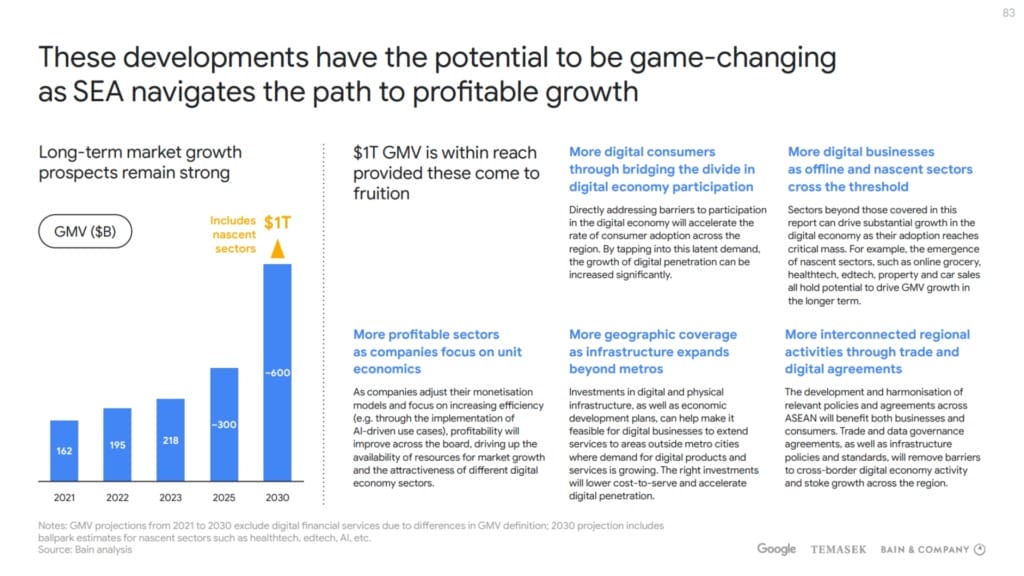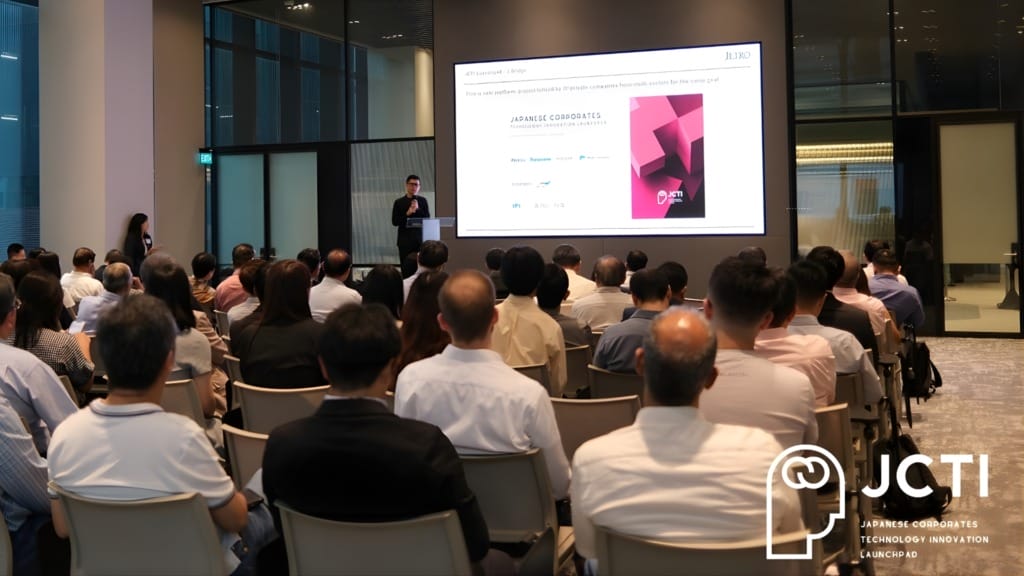Small and medium-sized enterprises (SMEs) are the backbone of Southeast Asia’s economy. In Singapore, they make up 99% of all enterprises and employ more than 70% of the workforce. They underpin innovation, sustain jobs, and anchor supply chains across industries from manufacturing and logistics to retail and healthcare. Yet their central role in driving growth is being tested by rapid technological change, mounting sustainability pressures, and intensifying global competition.
Digital transformation has become an economic imperative rather than a strategic choice. It forms the foundation for efficiency, innovation, and new business models, and is key to unlocking market opportunities and long-term competitiveness. For SMEs, which often operate with limited resources and lean teams, the ability to harness technology effectively can determine whether they stay relevant or fall behind. This is where strategic support and innovation partnerships become critical. IPI Singapore works with SMEs to move beyond surface-level digital adoption and embed technology into their core growth strategies.

“Most SMEs today already utilise digital tools, but the real difference emerges when they move beyond operational tasks and integrate technology into their strategy,” said Michael Goh, Chief Executive Officer of IPI Singapore. Together with Chief Technology Officer Alvin How, Goh leads IPI’s efforts to help SMEs overcome bottlenecks, build innovation partnerships, and scale internationally. Their message is clear: digitalisation, when treated as a strategic growth driver rather than a functional upgrade, is what will define the region’s next wave of economic progress.
Digital transformation as a driver of growth
SMEs in Singapore have made significant progress in digitalisation over the past five years. As of 2023, 95% have adopted at least one digital technology, up from 74% in 2018. Across ASEAN, roughly 70% of SMEs have taken similar steps. Still, many remain stuck at an early stage, focused primarily on foundational tools such as e-payments, cloud platforms, and basic online services.

The real opportunity lies in moving beyond these essentials. Advanced technologies such as artificial intelligence (AI), automation, and data analytics are transforming how companies operate, make decisions, and deliver value. According to a Google-Temasek-Bain report, Southeast Asia’s digital economy is expected to exceed US$300 billion by 2025, while AI adoption alone could add nearly US$1 trillion to the region’s GDP by 2030. For SMEs, these technologies offer a path to greater productivity, new revenue streams, and more personalised customer experiences.
As Goh explained, technology delivers the greatest impact when it is tightly aligned with business strategy. “Integrating digital tools such as AI, process automation, and data analytics into revenue models, or using customer data to derive actionable insights for product development or market expansion, is the foundation for business transformation and an engine for growth,” he said. Without a clear understanding of business objectives, technology investments risk becoming fragmented or underutilised.
But technology alone is not enough. “Technology alone does not create growth, process and people do. Before adopting new tools, SMEs need their processes mapped out and bring their teams on board,” Goh added. That process alignment is where many digital transformation efforts falter. Successful SMEs start by identifying the business problems they aim to solve, whether improving customer engagement, optimising supply chains, or entering new markets, and then deploy technology as part of an integrated growth plan.

At IPI, this approach is captured in the concept of “bite-sized innovations”, practical, incremental steps that deliver early wins and build organisational confidence. By focusing on achievable milestones rather than large, high-risk projects, SMEs can transform digitalisation from a one-off initiative into a sustained growth strategy.
Partnerships that accelerate innovation
Collaboration is one of the most powerful levers for SME innovation. Partnerships with corporates, research institutions, and startups give SMEs access to technologies, expertise, and markets that would otherwise remain out of reach. “Partnerships are critical because they give SMEs access to resources, technologies and markets that otherwise they may not have access to on their own,” said Goh.
These collaborations can be the difference between incremental change and transformative growth. IPI plays a pivotal role in facilitating such partnerships, particularly through its flagship annual event, TechInnovation. As Singapore’s leading technology brokerage platform, TechInnovation connects SMEs with global partners to co-develop solutions, license technologies, and scale their businesses. It also acts as a showcase for ready-to-market technologies and commercial use cases, helping SMEs bypass lengthy development cycles and accelerate deployment.

A prime example is the Japanese Corporates Technology Innovation (JCTI) Launchpad, developed with seven major Japanese companies including Panasonic and Ricoh. It enables SMEs to co-create and commercialise patented technologies, opening faster pathways to new products and markets. By embedding collaboration at the heart of innovation, SMEs can move beyond what their internal capabilities allow. At the same time, partners gain access to the agility and fresh perspectives that smaller firms bring.
The story of Good Pharma Dermatology, the company behind Suu Balm, illustrates this dynamic. Seeking to make its products more sustainable, the company partnered with the Consumer Chemicals Technology Centre at Singapore Polytechnic through IPI. Together, they reformulated its body wash into a concentrated format, reducing packaging and environmental impact without compromising performance. The project required extensive testing and validation, but it demonstrated how clearly defined goals, targeted partnerships, and technical expertise can translate ambitious ideas into commercial reality.
Breaking through the adoption barrier
Despite progress in digital adoption, many SMEs struggle to scale their initiatives beyond pilot projects — a phenomenon often referred to as “pilot purgatory.” Limited resources, integration challenges, and unclear outcomes often keep solutions stuck in small-scale experiments.
“Many SMEs in Singapore want to innovate, but scaling is always tough when resources are stretched and leaders are pulled in many directions,” Goh explained. For SMEs with annual revenues between S$1 million and S$50 million, cash flow pressures and centralised decision-making can slow down progress. Projects frequently stall when technology requires significant development work or when the business case is not well defined.

This is where TechInnovation plays a transformative role. By focusing on deployable solutions and real-world use cases, it helps SMEs avoid pilot purgatory and move quickly from experimentation to implementation. The platform curates ready-to-market technologies and showcases business applications that have already been validated, giving SMEs a clearer roadmap for scaling innovation.
IPI also helps SMEs overcome adoption hurdles through its network of Innovation Advisors, many of whom are former C-suite leaders, providing strategic guidance and practical advice. “Through our Innovation Advisors (many of them former C-suite leaders), we guide SMEs with a structured, bite-sized plan where our Innovation Advisors being industry practitioners, will share their vast real-life experiences with the SMEs to secure low hanging-fruits and early wins,” Goh said. Early successes build momentum, motivate teams, and create the confidence needed to scale further.
Beyond private sector efforts, public initiatives also play a crucial role in closing capability gaps and supporting SME transformation.

Government initiatives are another critical part of the solution. Singapore’s SMEs Go Digital programme, the Chief Technology Officer-as-a-Service (CTOaaS) platform, and the Enterprise Development Grant provide SMEs with funding, advisory support, and access to curated digital solutions. Similar schemes across the region, such as Malaysia’s SME Digitalisation Grant, reflect a growing policy focus on bridging capability and resource gaps for small businesses.
Talent development is equally important. Many SMEs lack the skilled workforce needed to integrate and scale advanced technologies. Upskilling and reskilling initiatives such as Singapore’s TechSkills Accelerator (TeSA) programme, which has trained over 17,000 professionals in areas like AI, cloud computing, and cybersecurity, help SMEs build in-house capabilities and reduce reliance on external vendors.
Connecting SMEs to international opportunities
Scaling domestically is only one part of the growth journey. For SMEs with global ambitions, expanding beyond domestic markets has become essential. The region’s digital economy is growing quickly, creating new opportunities across borders. Yet many businesses postpone international expansion until they feel “ready”, only to find that competitors have already moved in and taken the lead.
“Too many wait until they feel ‘ready’, but by then, competitors would have established themselves,” Goh said. IPI’s Innovation Advisors work with SMEs to strengthen their core operations and design go-to-market strategies that align with international ambitions. Chemistry between partners is often the deciding factor. “What really makes the difference is the chemistry between people. Once both sides see that they can work well together, that is when real success happens,” Goh added.
Aegis Packaging illustrates this principle. With IPI’s support, the company enhanced its R&D and quality systems, successfully conducted trials in Indonesia and Thailand, and then expanded across Asia and into Europe. Strengthening internal capabilities early allowed Aegis to build credibility with partners and navigate regulatory and operational complexities in new markets.
Advances in digital technology are also lowering barriers to international growth. Cloud platforms and collaborative tools now make cross-border coordination far easier, while AI-driven market intelligence helps SMEs identify demand, adapt offerings, and refine strategies for specific markets. At the same time, open innovation platforms such as TechInnovation connect businesses with overseas partners, facilitating joint ventures, licensing deals, and collaborative R&D that can accelerate expansion into mature markets.
Building resilience for the future
In a volatile global economy, resilience depends as much on mindset as on resources. “From my perspective, relevance is the true differentiator,” Goh said. SMEs that cling to ‘business as usual’ risk being left behind, while those that stay curious, embrace collaboration, and focus on outcomes can thrive despite uncertainty.
Resilience requires integrating innovation into everyday decision-making, not treating it as a one-off upgrade. “Too often SMEs think of innovation as a one-time upgrade, but real competitiveness comes when innovation is part of daily decisions,” Goh noted. “The SMEs that stand out are the ones that integrate technology in practical ways, stay open to partnerships, and adapt quickly when conditions shift.”
The most successful SMEs view innovation as a cultural mindset rather than a technology purchase. By combining digital transformation with strategic partnerships, they build the agility needed to adapt quickly and attract global collaborators. This approach also strengthens their ability to withstand shocks, from supply chain disruptions to cybersecurity threats, and seize new opportunities when they arise.

Policy and ecosystem support will be central to this effort. Singapore’s Digital Enterprise Blueprint, for example, outlines a national strategy to help SMEs become smarter with AI, scale faster with integrated solutions, strengthen their cyber resilience, and upskill their workforce. It reflects a broader trend across ASEAN towards collaborative ecosystems involving governments, industry associations, technology providers, and educational institutions, all working together to support SME transformation.
Agility, openness, and relevance will define the SMEs that lead in this new era. As Goh concluded, “Innovation is not about hype; it is about building relevance and partnerships that last.” SMEs that view innovation as an ongoing practice rather than a one-time upgrade, adopt “bite-sized” approaches, and leverage platforms like TechInnovation to form meaningful collaborations will be best placed to shape the future of Southeast Asia’s digital economy.





